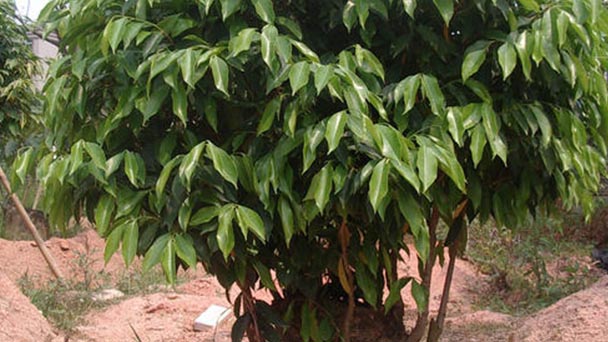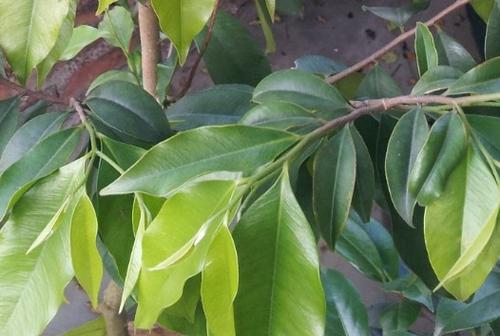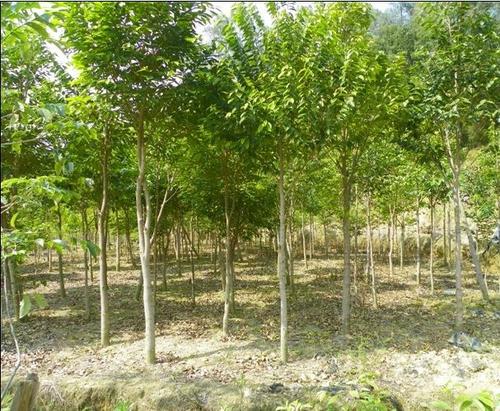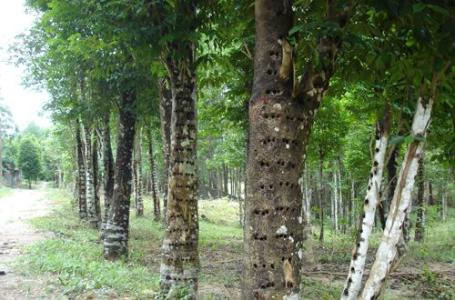How to grow Aquilaria malaccensis
Written by Maggie
Dec 25 2020

The original forest of Aquilaria malaccensis has been seriously damaged. In addition to the weak regenerative ability of the natural forest, only scattered remaining plants are left now. The national wild resources have been nearly exhausted, and the market demand is very great. The growing methods of Aquilaria malaccensis is introduced as follows.

The growing environment of Aquilaria malaccensis
1.Aquilaria malaccensis prefers to be born in low altitude mountain, hill and sparse forest in roadside sunshine. The distribution area is located near and to the south of the North return line, belonging to high temperature and rainy, humid tropical and south Asian tropical monsoon climate, and prefers humid and loose brick soil or mountain yellow soil with thick soil layer and more humus. Often mixed with tray Qinggan, Huang Tong, olives, water stone catalpa and so on.
2.Aquilaria malaccensis, a weakly positive tree species, tolerates shade when young, grows slowly in infancy, and gradually increases after 10 years. The average annual height growth and average DBH growth of 20-30 years of plants can reach 90 cm and 1 cm. Flowers bloom from March to June and fruits mature from September to October.
Growing time of Aquilaria malaccensis
Spring temperature rises between March and April, spring shoot has not germinated, or just germinated, the choice of overcast and rainy planting. The survival rate can reach more than 95%. If bagged seedlings or nutrient pot seedlings are selected, the planting season is relatively loose and the planting effect is better.
Preparation for growing Aquilaria malaccensis
Dig the hole according to the spacing of plants, the hole is 50×50 cm, 40 cm deep. After digging the hole, backfill the topsoil first, and then put in the base fertilizer. 100 grams of compound fertilizer, 100 grams of calcium, magnesium and phosphorus, 250 grams of superphosphate shall be used for each plant, and the backfill soil shall be mixed evenly. However, the root system should avoid direct contact with compound fertilizer, and the root system should be directly exposed to calcium, magnesium, phosphorus and superphosphate, which is conducive to rooting. When planting, be careful to plant properly deep, avoid exposing the base of the ground diameter.After planting, the whole backfill soil should be slightly higher than the point surface into a mound shape, or open drainage ditch, do not water, soil buried, so as to avoid rot.

Planting density of Aquilaria malaccensis
The planting density cannot be described in general terms, but depends on the site conditions. The area with good water and fertilizer conditions is 2×3 meters, with about 100 plants per mu. The area with less fertile land and less rainfall is more likely to adopt the specification of 2× 2.5 meters to plant about 120 plants per acre.
Growing method of Aquilaria malaccensis
Before growing, cut off the side branches and leaves of the lower part of the seedling, retain several upper leaves, and cut off half of each leaf. When the seedlings were planted, the plants were erect, the roots were stretched, the soil was covered by layers, and the root water was poured thoroughly.The survival rate can reach more than 95%.
Rearing of young trees in Aquilaria malaccensis
After planting, the end of the rainy season to loosen the soil, weeding 2 times. In the following 3 years, it is necessary to strengthen the tending and management work such as removing miscellaneous, removing weeds and weeds, loosening soil and expanding holes. Nurture twice a year, once before and once after the rainy season.
Timely fertilization of Aquilaria malaccensis
During the combination of soil loosening, weeding and hole expanding, fertilizer should be applied twice a year during the rainy season, and 100 ~ 150 grams of compound fertilizer should be applied to each plant each time, so as to promote the growth of trees, make them close up as soon as possible and reduce overgrowth of weeds. Care should be taken to trim the branches once a year to cultivate a good dry shape, conducive to the production of incense. But we should pay attention to the first year of young forest, do not prematurely, too much bald all branches, appropriate temporary retaining a certain branch is good.With the delay of time, the young forest gradually grows tall, gradually pruning up. In this way, the photosynthesis of plant leaves was increased, and the growth and root system development of young forest were improved.
Maintenance of Aquilaria malaccensis
In the growing period of Aquilaria malaccensis, only weeding and proper fertilization are required. Adult trees are resistant to impoverishment, do not need too much care, slight insect pests, but conducive to the production of incense.

Latest Updated
- Benefits of Bugleweed - 7 Science-backed Health Benefits
- Bugleweed Dangers & Side Effects - Is It Poisonous?
- How to Plant Evergreen Trees - What You Should Know
- When to Plant Evergreens - Grow Guide for Evergreen Trees
- 12 Wonderful Evergreen Shrubs for Your Garden
- 12 Popular Evergreen Plants with Pictures for Beginners
- When And How To Prune A Lilac Bush Like a Pro
- How to Grow & Care for Lilac Vine (Hardenbergia Violacea)
- Japanese Lilac Tree (Syringa Reticulata) Care & Propagation Guide
- Shumard Oak Pros and Cons - What to Know
Popular Articles
- Winter maintenance of Antirrhinum Majus
- How to Grow Terminalia Mantaly Tree
- How to Grow and Care for Crossostephium Chinense
- How to grow Antirrhinum Majus in spring
- Peristeria Elata (Dove Orchid) Profile: Info & Care Guide
- Underwatered Snake Plant (Sansevieria Trifasciata) - Signs And How To Fix
- How to Care for Brazilian Jasmine Plant (Mandevilla Sanderi)
- How to Grow & Care for Graptopetalum Purple Delight in Summer
- Rosa Chinensis (China Rose): Plant Growing & Care Tips
- How to Care for Baby Sun Rose (Aptenia Cordifolia)